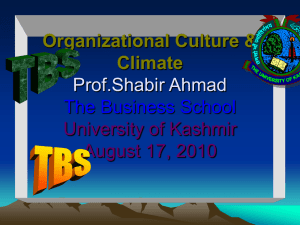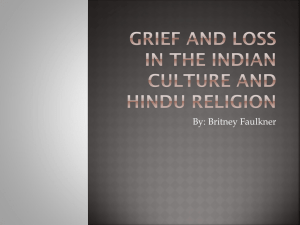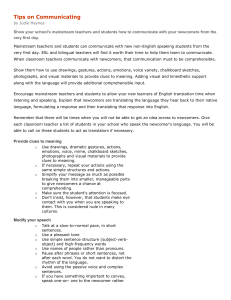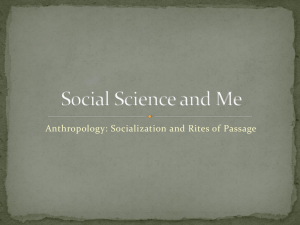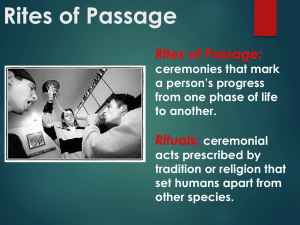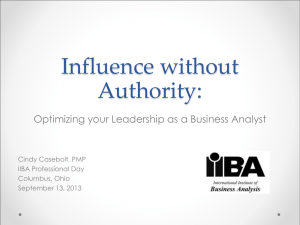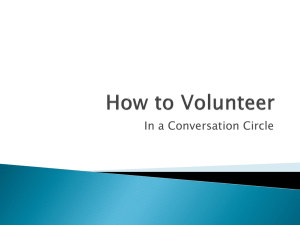Org Culture
advertisement
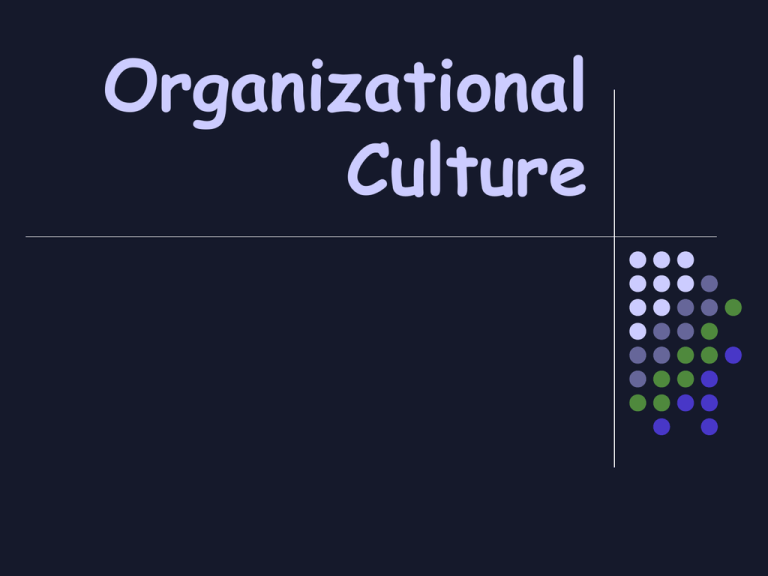
Organizational Culture ORGANISATIONAL Policy/Rules STRUCTURE Officialisation Language Hierarchy Facts Dialect Norms Attitudes Beliefs Rumours Heroes Socialisation ORGANISATIONAL CULTURE Organizational Culture the set of shared values and norms that controls organizational members’ interactions with each other and with people outside the organization Organizational Culture Values: general criteria, standards, or guiding principles that people use to determine which types of behaviors, events, situations, and outcomes are desirable or undesirable Norms: kinds of behavior that are considered acceptable or typical for a group of people Geert Hofstede’s Culture Dimensions Power Distance (PDI) Individualism (IDV) Masculinity (MAS) Uncertainty Avoidance (UAI) Long term Orientation (LTO) Comparison of Cultural Values Americans Japanese Arabs Freedom Independence Self-reliance Equality Individualism Competition Efficiency Time Directness Belonging Group harmony Collectivity Age/seniority Group consensus Cooperation Quality Patience Indirectness Family security Family harmony Parental guidance Age Authority Compromise Devotion Patience Indirectness 3M Case questions What are the VALUES of 3M culture? What are the main ways in which 3M tries to create this culture? Stories Rituals Elements of Culture Heroes Symbols & Language Do Organizations Have Uniform Cultures? Dominant Culture Subcultures Core Values Intensity of Core Values Commitment to Core Values Strong Versus Weak Cultures Level of Behavioral Control Level of Employee Turnover How A Culture Begins Hiring and Retention Indoctrination & Socialization Behavior and Role Modeling How is an Organization’s Culture Transmitted to its Members? Socialization: the process by which members learn and internalize the values and norms of an organization’s culture Entry Socialization Options • Formal vs. Informal • Individual vs. Collective • Fixed vs. Variable • Serial vs. Random Formal vs. Informal Formal tactics segregate newcomers from existing organizational members during the learning process. With informal tactics, newcomers learn on the job, as members of a team. Collective vs. Individual Collective tactics provide newcomers with common learning experiences designed to produce a standardized response to a situation. With individual tactics, each newcomer’s learning experiences are unique, and newcomers can learn new, appropriate responses for each situation. Fixed vs.Variable Fixed tactics give newcomers precise knowledge of the timetable associated with completing each stage in the learning process. Variable tactics provide no information about when newcomers will reach a certain stage in the learning process. Sequential vs. Random Sequential tactics provide newcomers with explicit information about the sequence in which they will perform new activities or occupy new roles as they advance in an organization. With random tactics, training is based on the interests and needs of individual newcomers because there is no set sequence to the newcomers’ progress in the organization. How Organizational Cultures Sustain Top Management Philosophy of the Organization’s Founders Selection Socialization Organizational Culture Communicating Cultural Norms Organizations use several types of ceremonial rites and ceremonies to communicate cultural norms and values. Rites of passage Rites of integration Rites of enhancement Organizational Rites and Ceremonies TYPE EXAMPLE POSSIBLE CONSEQUENCES Rites of passage Orientation programmes Facilitate transition into new roles; minimize differences in way roles are carried out Rites of enhancement Company ceremonies e.g. Awards Enhance power & identity; emphasize value of proper behavior Rites of integration Office Party Encourage common feelings that bind members together Maintaining Organizational Culture Methods of Maintaining Organizational Culture • What managers and teams pay attention to • Reactions to organizational crises • Managerial role modeling • Criteria for rewards • Criteria for selection and promotion • Organizational rites, ceremonies, stories Recruit employees who fit Organizational Culture Remove employees who deviate Issues Associated with External Adaptation and Survival Identifying the organization's primary mission, and selecting strategies to pursue it. Setting specific targets. Determining how to pursue the goals, including selecting an organizational structure and reward system. Establishing criteria to measure individual and team goal accomplishment. Issues Associated with Internal Integration Identifying methods of communication, and developing a shared meaning for important concepts. Establishing criteria for membership in groups and teams. Determining rules for acquiring, maintaining, and losing power and status. Developing systems for encouraging desirable behaviors and discouraging undesirable behaviors. Organizational Culture Functions Liabilities Defining boundaries Impeding change Conveying identity Inhibiting diversity Promoting commitment Stifling creativity Controlling behavior Blocking mergers & acquisitions Effects of Organizational Culture on Employee Behavior and Performance Allows employees to understand the firm’s history and current approach. Fosters commitment to corporate philosophy and values. Serves as a control mechanism for employee behaviors. Certain cultural types may produce greater effectiveness and productivity.
